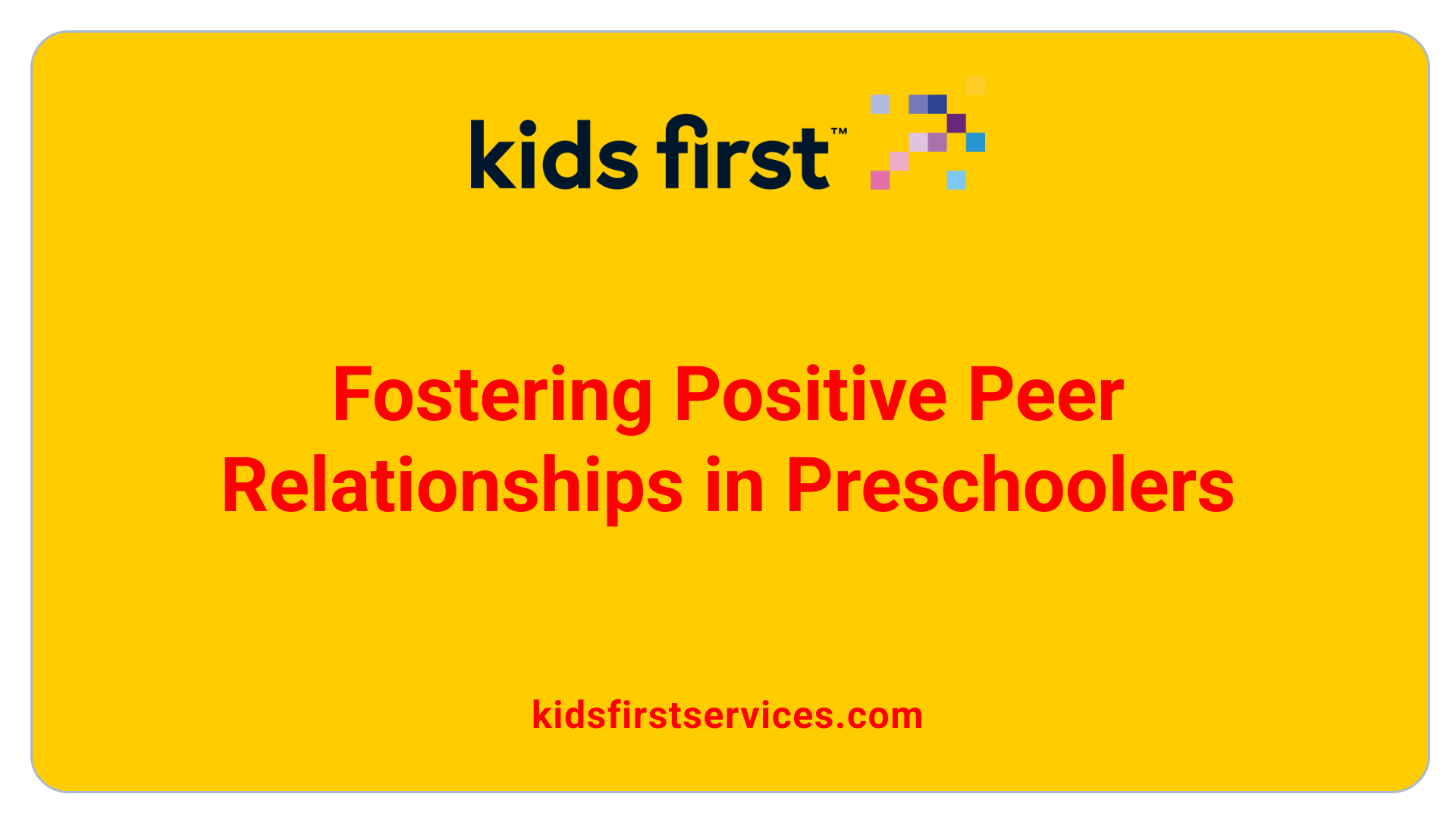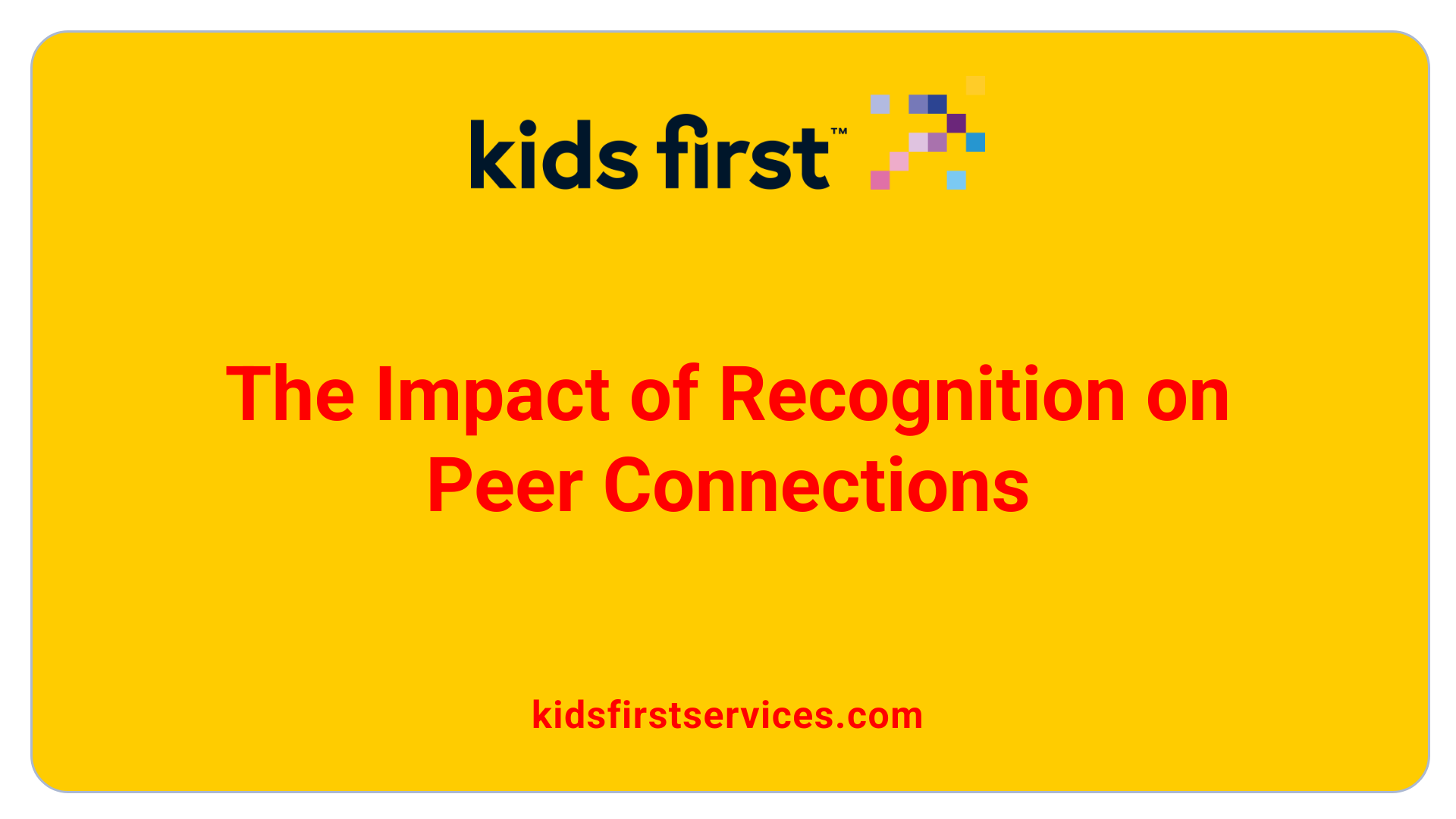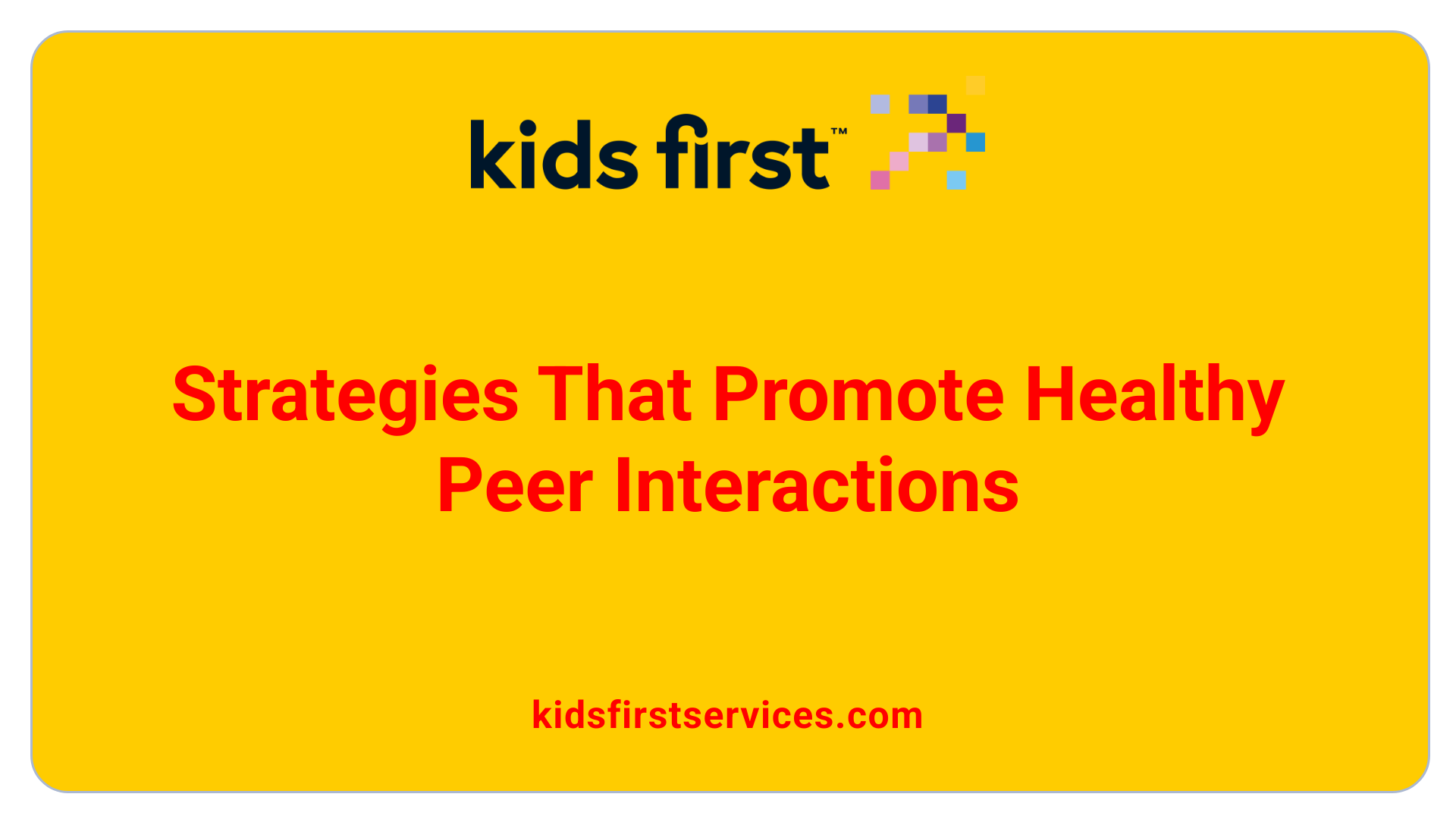
How to Encourage Positive Peer Relationships in Preschoolers
Building Bridges - Cultivating Friendships in Early Childhood Education
Introduction
The preschool years are a significant period for children as they begin to explore their social worlds beyond the family unit. Forming friendships during this time plays a crucial role in building connections, fostering security, enhancing self-esteem, and adapting successfully to an educational environment. Encouraging positive peer relationships in preschoolers not only aids their current social and emotional development but lays the foundation for future interpersonal skills and lifelong well-being. Let's delve into effective strategies and activities for promoting these vital interactions among young children.
Creating an Inclusive Environment for Social Growth

How can teachers and educators encourage positive peer relationships in children?
Teachers and educators play a pivotal role in fostering positive peer relationships among preschoolers through intentional strategies. Creating an inclusive environment is essential for nurturing acceptance and diversity while making each child feel valued and understood.
Teach Social Skills: Explicitly teaching social skills such as sharing, taking turns, and empathy can guide children on how to engage positively with peers. Role-playing scenarios can be a fun and effective way to practice these concepts in a safe setting.
Promote Collaborative Learning: Structuring collaborative learning environments helps children from different backgrounds work together. Activities like group projects or shared games encourage interaction and reinforce friendship skills while allowing children to observe and emulate positive behaviors.
Facilitate Discussions: Regular discussions on feelings and how to build friendships empower children to express their thoughts openly. The classroom can become a safe space for children to talk about their experiences and learn from one another.
Involve Parents: Engaging parents in the process helps extend social learning beyond the classroom. Sharing information about emerging friendships allows parents to facilitate social interactions during playdates or community events.
Use Technology to Connect: For children facing social challenges, utilizing technology, such as video calls, can bridge gaps and promote connections with peers, enhancing their ability to form friendships.
Overall, creating an environment that emphasizes inclusivity and collaboration lays the foundation for children to develop meaningful relationships in their early years.
Activities to Foster Peer Connections

What activities can promote positive peer relationships among preschoolers?
To promote positive peer relationships among preschoolers, various engaging activities can be implemented.
Interactive Games: Activities like 'Show and Tell' encourage children to share stories and learn about each other, helping to identify common interests. Games such as 'Two Truths and a Lie' allow kids to share personal facts, enhancing peer understanding and empathy.
Collaborative Group Projects: Engaging in group projects, such as planning a party or creating art together, enhances teamwork and cooperation. These shared tasks help children learn to negotiate roles and share responsibilities, reinforcing their social bonds.
Empathy-Focused Activities: Games like 'Guess the Feeling' are effective in helping children express emotions and recognize others' feelings. This promotes emotional literacy and nurtures bonds among peers.
Classroom Decorations: Involving children in classroom decoration encourages a sense of belonging and collective effort, fostering community spirit.
Overall, structured interactions—be it through games or collaborative innovations—create a nurturing environment for peer relationship building, vital for emotional and social development.
The Power of Recognition in Child Development

How can recognition and acknowledgment support positive and supportive peer relationships?
Recognition and acknowledgment are powerful tools in nurturing positive peer relationships among preschoolers. When children are praised for their friendly behaviors, such as sharing toys or helping others, it reinforces those actions, making them more likely to repeat them.
Establishing a culture of appreciation helps children feel valued, promoting a sense of belonging in their peer groups. This not only boosts their motivation to engage socially but also helps them build trust with one another, which is essential for healthy interactions.
Impact of peer recognition on motivation and belonging
Positive peer recognition fosters an environment where children feel supported and motivated to connect with their peers. For instance, celebrating achievements through activities like a 'good deeds tree' cultivates camaraderie among children and reinforces the importance of kindness and cooperation.
Moreover, acknowledgment of positive behaviors encourages open communication. When children feel recognized, they are more likely to express themselves and be receptive to the feelings and perspectives of others. This exchange is pivotal in developing emotional understanding and essential social skills.
Building trust and open communication through acknowledgment
Through recognition, educators can facilitate deeper connections among children. By promoting discussions around feelings and celebrating collaborative efforts in classroom activities, children learn to appreciate one another's contributions, leading to stronger bonds.
Overall, fostering an environment where recognition is regularly practiced enhances peer relationships, supports emotional development, and builds a more connected community among preschoolers.
Effective Strategies for Supporting Peer Interactions

What are effective strategies for supporting peer interactions in preschool?
Supporting peer interactions in preschool involves several important strategies aimed at fostering social skills. One effective method is through explicit teaching of social skills. Educators can model appropriate behaviors and discuss various scenarios, allowing children to see and practice typical interactions.
Planned interactions and role-playing to teach social skills
Role-playing activities are excellent for teaching children how to navigate social situations. For example, a teacher might set up a scenario where children take turns choosing a game. This hands-on practice helps children learn essential skills like sharing and cooperation in a fun setting.
Creating intentional opportunities for interaction
Creating structured opportunities for interaction is crucial. Teachers can facilitate peer collaboration by assigning roles during activities, such as snack time or clean-up sessions, where children have designated responsibilities. This increases engagement and teaches teamwork.
Peer partnerships and structured collaborations
Peer partnerships, where children are paired to work on tasks, allow for observation and learning from one another. By engaging in mixed-gender partnerships or pairing children with varying skills, all children experience enriched social interactions. These partnerships can enhance acceptance and empathy, creating a supportive peer culture.
Incorporating these strategies helps children develop not only their social skills but also lays the foundation for healthy relationships, which are vital for their overall development.
Examples of Positive Peer Relationships
What are some examples of positive peer relationships?
Positive peer relationships in preschoolers are essential for their social and emotional development. These relationships can take many forms.
Study Groups and Supportive Friendships:
- Forming study groups allows preschool friends to collaborate on challenging tasks, improving their understanding and boosting teamwork skills. This peer support helps to foster a sense of community and shared goals.
Peer Influence on Constructive Behavior:
- Friends often encourage each other to try new activities, whether it’s joining clubs or participating in sports. This not only builds confidence but also helps to alleviate shyness, making children feel more engaged and connected.
Communication and Empathy:
- Engaging in structured group projects promotes effective communication and empathy. Through collaborative tasks, preschoolers learn to express themselves, listen to their peers, and understand different perspectives, which strengthens their social bonds.
Emotional Support:
- Positive peer relationships provide emotional validation and companionship. Friends who support each other during challenges in school create a nurturing environment that enhances overall mental health and academic engagement.
Encouraging Constructive Behaviors:
- Friends can influence each other positively by standing up against bullying or fostering inclusivity, demonstrating how supportive peer dynamics can lead to a more inclusive environment for all children.
Through these examples, it’s clear that fostering positive peer relationships involves a mix of collaboration, encouragement, and empathy, forming the foundation for a thriving preschool social landscape.
Influence of Peer Relationships on Social Development

How can both positive and negative peer relationships impact a child's social development?
Both positive and negative peer relationships play crucial roles in a child's social development.
Positive Interactions:
- Enhance social skills and help in building self-esteem.
- Foster emotional well-being through supportive connections.
- Promote the development of empathy and cooperation skills.
Negative Interactions:
- Characterized by bullying, rejection, or conflict, can lead to feelings of isolation.
- Result in low self-esteem and emotional distress, significantly hindering social growth.
- Early difficulties in managing peer interactions may contribute to long-term adjustment problems and mental health issues.
Social Challenges and Peer Pressure as Developmental Factors
Social dynamics present both challenges and opportunities.
- Peer pressure can complicate relationships, leading children to conform to group norms that may not align with their values.
- Social comparisons, especially in diverse preschool environments, can impact self-image and friendships, highlighting the importance of teaching healthy peer interactions.
- Educators and parents should actively foster positive relationships among peers to help children navigate the complexities of social interactions.
Recognizing and addressing these factors can significantly influence a child's path to developing healthy social connections and emotional resilience.
Conclusion
By actively promoting positive peer relationships in preschoolers, we set the stage for their successful social-emotional development. These early interactions teach crucial life skills, foster a sense of security and belonging, and help children build meaningful connections. Educators and parents play a pivotal role in facilitating these relationships by creating inclusive environments, guiding social interactions, and recognizing positive behaviors. As children learn from these experiences, they develop empathy, communication skills, and the confidence needed to navigate the complexities of social interactions. Therefore, investing time and effort in encouraging these connections is essential for nurturing well-rounded, emotionally healthy individuals.
References
- Peer Relationships - ECE Resource Hub
- 10 Ways to Encourage Positive Peer Relationships - Brookes Blog
- [PDF] Promoting Positive Peer Social Interactions - CSEFEL
- How to help kids navigate friendships and peer relationships
- Promoting Positive Peer Relationships in Young Children
- Supporting Preschoolers' Positive Peer Relationships, Young ... - ERIC
- Peer relations: Prevention and intervention programs
- Building Positive Relationships in Early Childhood - Brightwheel
- Easy tips for encouraging positive peer relationships
- 5 strategies for building positive relationships with children in early ...




























